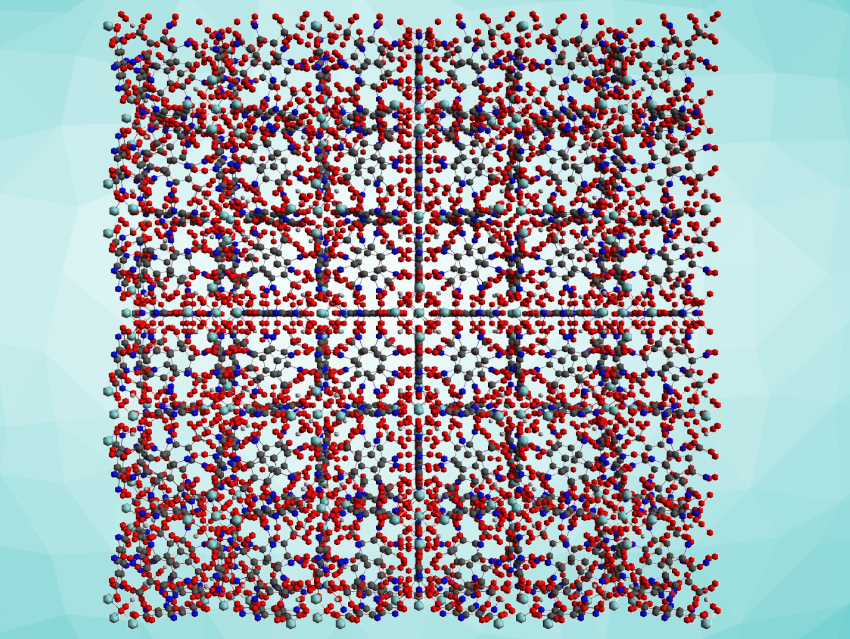Omar K. Farha, Kaikai Ma, Northwestern University, Evanston, IL, USA, Martijn C. de Koning, TNO, Rijswijk, The Netherlands, John H. Xin, The Hong Kong Polytechnic University, and colleagues have developed a metal–organic framework (MOF)-textile composite that can deactivate both biological threats, such as SARS-CoV-2, and chemical threats, such as chemical warfare agents. Materials that are effective against both classes of threats are rare.
The team used a robust zirconium-based MOF (UiO-66-NH2) as a chlorine carrier, which was used to coat PET fibers. Treatment with a commercial bleaching solution converted the amine groups located on the MOF linkers to chloramine groups. The researchers found that the MOF/fiber composite exhibited activity against SARS-CoV-2 and both gram-negative (E. coli) and gram-positive bacteria (S. aureus). The composite also rapidly degraded the chemical warfare agent mustard gas and its less toxic chemical simulant 2-chloroethyl ethyl sulfide (CEES).
The composite material is reusable: It can be restored to its original state after use by a simple bleach treatment. The preparation of the composite material is scalable and only requires basic textile-processing equipment. The fabric could be used, e.g., in protective wear.
- Immobilized Regenerable Active Chlorine within a Zirconium-Based MOF Textile Composite to Eliminate Biological and Chemical Threats,
Yuk Ha Cheung, Kaikai Ma, Hans C. van Leeuwen, Megan C. Wasson, Xingjie Wang, Karam B. Idrees, Wei Gong, Ran Cao, John J. Mahle, Timur Islamoglu, Gregory W. Peterson, Martijn C. de Koning, John H. Xin, Omar K. Farha,
J. Am. Chem. Soc. 2021.
https://doi.org/10.1021/jacs.1c08576




